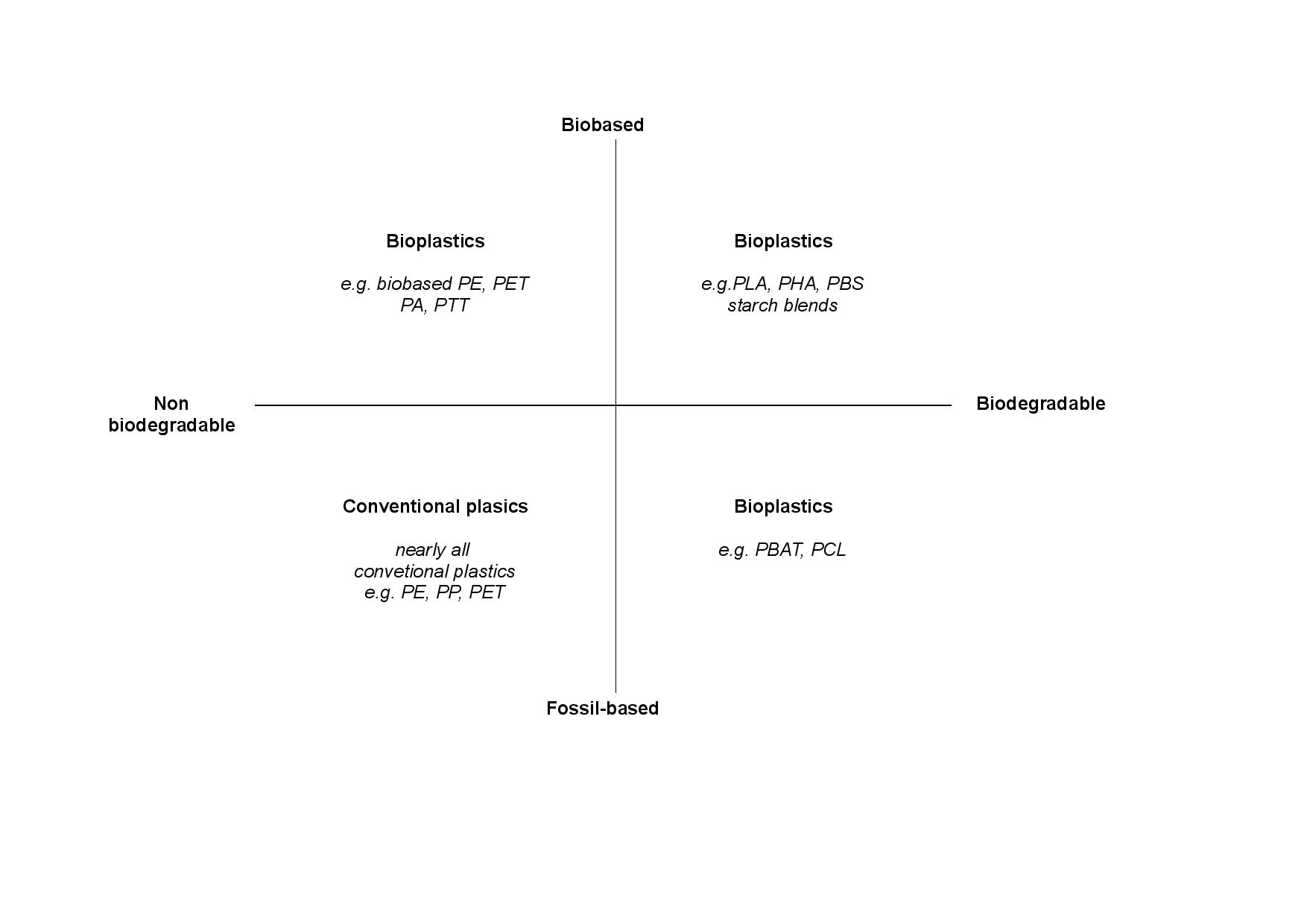Bioplastics are not just one single substance, they comprise of a whole family of materials with differing properties and applications.
Plastic material according to European Bioplastics is defined as a bioplastic if it is either biobased, biodegradable or features both properties.
Biobased plastics means that the material or product is (partly) derived from biomass (plants). Biomass used for bioplastics stems from e.g. corn, sugarcane, or cellulose.
Biodegradable: Biodegradation is a chemical process during which microorganisms that are available in the environment convert materials into natural substances such as water, carbon dioxide, and compost (artificial additives are not needed). The process of biodegradation depends on the surrounding environmental conditions (e.g. location or temperature), on the material and on the application.
Important to know – biobased plastic does not equal biodegradable plastic.
The properties of biodegradation does not depend on the recourses basis of a material, but is rather linked to its chemical structure. In other words, 100 percent biobased plastics may be nonbiodegradable, and 100 percent fossil based plastics can biodegrade.
The family of bioplastics is roughly divided into three main groups:
-
Biobased or partly biobased non-biodegradable plastics such as biobased PE, PP, or PET (so called drop-ins) and biobased technical performance polymers such as PTT or TPC-ET
-
Plastics that are both biobased and biodegradable, such as PLA and PHA or PBS
-
Plastics that are based on fossil resources and are biodegradable, such as PBAT

